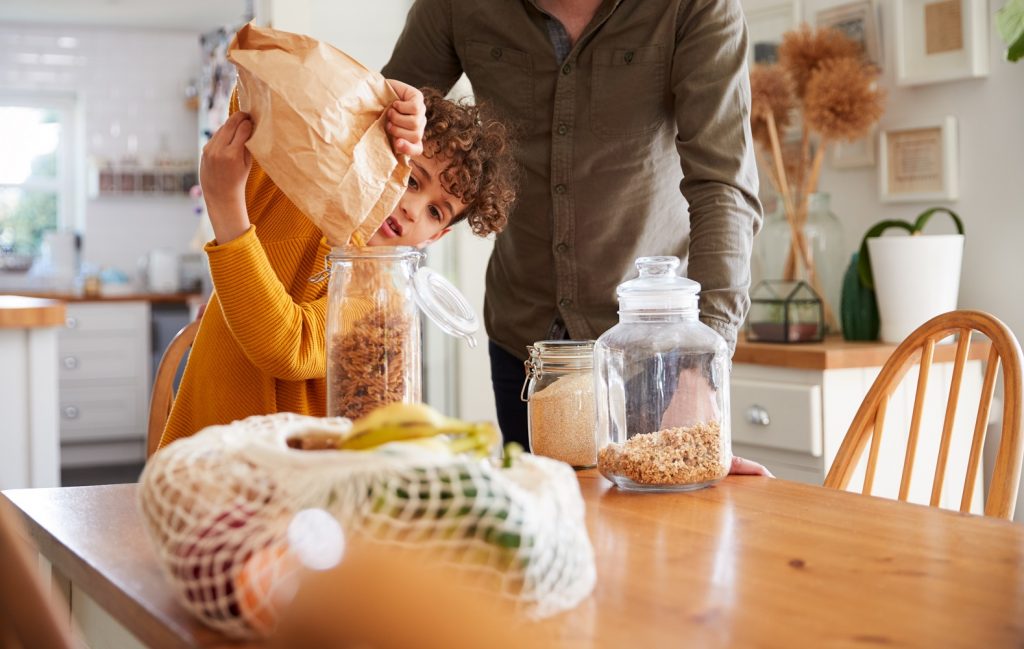When some people hear the term’ zero waste’, they automatically assume it’s about not producing any waste at all. Some are also intimidated into switching to a zero-waste lifestyle as they believe it sounds nearly impossible. But the truth is, a zero-waste home means cutting down your resource usage and reducing your waste production as much as possible to avoid adding more waste to the landfills.
By Lawrence Shultz of Dirt Cheap Rubbish Removal

While transitioning to a zero-waste home doesn’t happen overnight, there are easy steps and habits you can make that can make a massive difference to your home and the environment in the long run. Here are ten easy steps to help you transition into a zero-waste home:
- Declutter Your Home
To begin your journey towards a zero-waste home, start by decluttering your house, as this will allow you to evaluate which waste is dominating the most. As you’ve gathered all your clutter, refrain from throwing them away right away. Instead, you can repurpose them by donating them to charities, hosting a garage or yard sale, or gifting them to your loved ones. You can check out the Dirt Cheap Rubbish Removal website or other professional rubbish removers for unwanted and unsaleable items. They’ll collect your waste and recycle them, leaving the landfills as the very last choice.
- Switch To Solid Shampoos And Soaps
Many homeowners are fond of using bottled liquid soaps and shampoos as they’re more convenient to use. Unfortunately, they’re also one of the leading producers of waste. Once the bottles are empty, you’ll have to rebuy new bottles, eventually filling your home up with empty shampoo and soap bottles. For a zero-waste home, it’s best to switch them into solid shampoos and soaps, or better known as shampoo bars and bar soaps. They’re not wasteful, and they last longer than the liquid ones.
- Switch To Reusable Water Tumbler
Using plastic water bottles may be more convenient since you can buy them anywhere whenever you need water. Unfortunately, plastic water bottles are among the leading contributors to waste on the planet. To help lessen the number of plastic water bottles on landfills and eliminate any plastics at home, make sure each family member has their reusable water tumbler. This way, they can quickly refill this with water when needed instead of constantly buying plastic water bottles.
- Skip Takeout
Ordering and taking out food can be a tough habit to break, especially as it’s more convenient and can save you much time cooking your food. Unfortunately, taking out food can also lead to more waste as you bring in plastic food bags, utensils, and disposable cups. It’s best to cook your meals to reduce waste. If you still need to order food, make sure to order from an eco-friendly restaurant that uses sustainable materials in storing and packing their foods.
- Utilize Glass Jars
Instead of using plastic containers, now’s the time to start using glass jars as food storage and containers. It will help cut down your usage of plastic and achieve a zero-waste kitchen. Glass jars are also reusable for other purposes such as preserving items or use as flower vases.

- Forego The Tissues
Many people don’t realize that toilet paper and tissues are not recyclable, and the moment they’re used, they’re already harmful to the environment. As a sustainable alternative, you can switch back to old-school handkerchiefs and towels. You can quickly reuse them again and again after a thorough wash.
- Bring Tote Bags When Shopping For Groceries
Instead of using plastic bags to pack your groceries after shopping, it’s ideal to use tote bags to take your grocery items. This way, you can avoid taking more plastic bags into your home. Moreover, as you go shopping, it’s better to buy in bulks so you can use reusable boxes instead of plastic bags.
- Use Bamboo Toothbrushes
Many people are used to buying plastic toothbrushes that they don’t realize they’re adding more waste at home. For a sustainable home, it’s time to eliminate plastic toothbrushes and switch them with bamboo toothbrushes. These eco-friendly toothbrushes are plant-based and safe for the environment.
- Choose Foods With Minimal or No Packaging
Most foods sold at malls and convenience stores are in plastic packaging. As you transition to a zero-waste lifestyle, you need to be more conscious of your shopping habits and focus on buying foods with minimal or no packaging at all. You may visit the farmer’s markets as most of their products are fresh and sold with no packaging.
- Go Paperless
Another easy way to preserve the environment, save trees, and reduce your waste is by going paperless. So, unsubscribe from your monthly magazine copies and daily newspapers and opt for digital copies. You can also ask for electronic bills and receipts and tell your utility companies to skip the printing. When sending and receiving letters, opt for e-mails. If there are instances when you need to use paper, then make sure you print and use both sides.
Endnote
Switching to a zero-waste lifestyle doesn’t require you to make changes all at once. Doing these easy tips one at a time is a great way to start transitioning into a zero-waste home. Most importantly, don’t forget to get your family involved, as your combined micro efforts can bring substantial positive impacts for the planet.
About the Author
Lawrence Shultz is a rubbish removal expert. He has been in this business for five years. He loves to play basketball and watch action movies. He is married with two children.